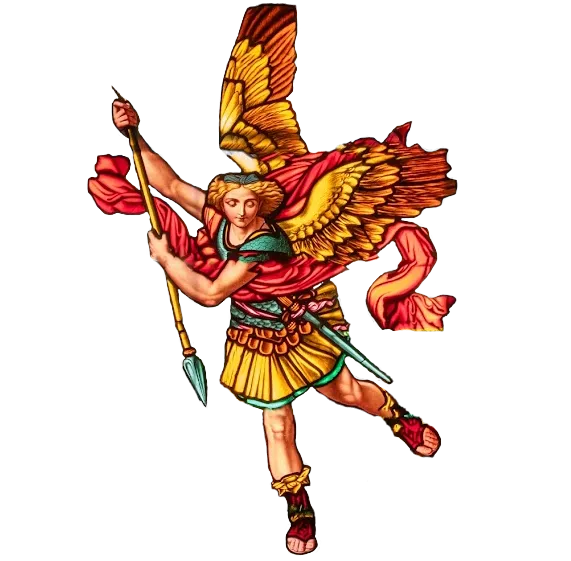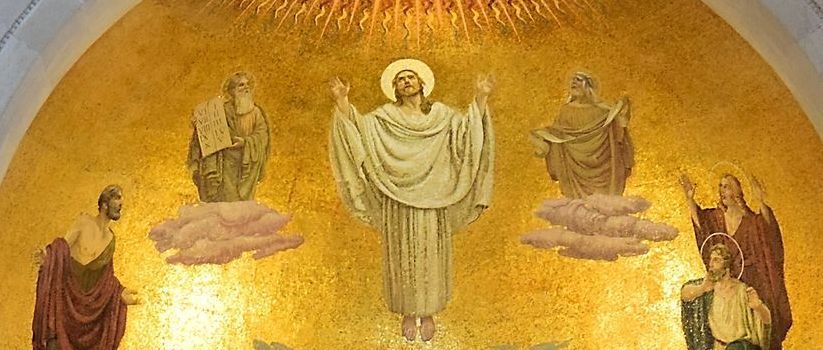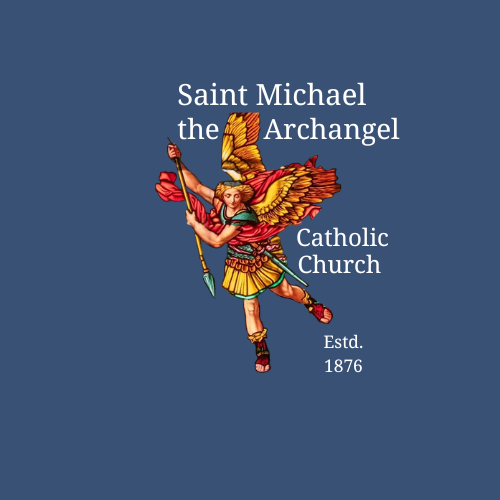The Feast of the Transfiguration of the Lord is August 6th.
When this falls on a Sunday, it supersedes the readings for that day.
What is the Transfiguration?
The Transfiguration of Jesus is one of the key events in Jesus’ life. He took three apostles – Peter, James, and John – up to a high mountain to pray. As they were praying, His appearance changed, and His clothes became “dazzling white.” At that point, Moses and Elijah appeared and spoke to the Lord about His upcoming death. A cloud overshadowed the group, and God the Father’s voice came from the cloud saying, “This is my Son, my Chosen; listen to him!”
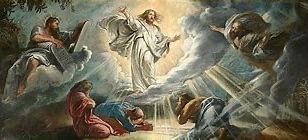
After six days Jesus took Peter, James, and John his brother, and led them up a high mountain by themselves. And he was transfigured before them; his face shone like the sun and his clothes became white as light...a bright cloud cast a shadow over them, then from the cloud came a voice that said, “This is my beloved Son, with whom I am well pleased; listen to him.”
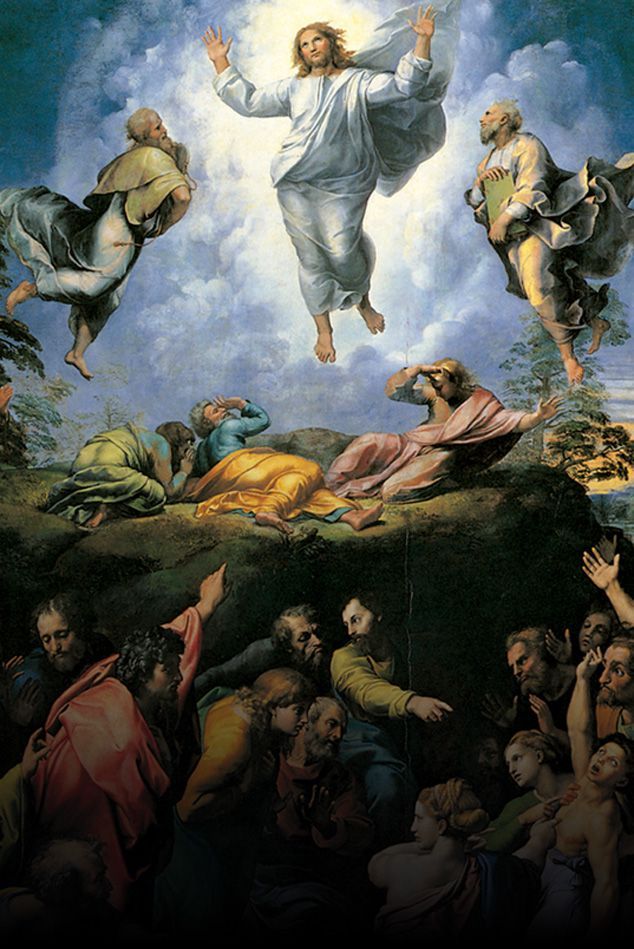
The Story of the Transfiguration of the Lord
All three Synoptic Gospels tell the story of the Transfiguration (Matthew 17:1-8; Mark 9:2-9; Luke 9:28-36). With remarkable agreement, all three place the event shortly after Peter’s confession of faith that Jesus is the Messiah and Jesus’ first prediction of his passion and death. Peter’s eagerness to erect tents or booths on the spot suggests it occurred during the week-long Jewish Feast of Booths in the fall.
According to Scripture scholars, in spite of the texts’ agreement, it is difficult to reconstruct the disciples’ experience, because the Gospels draw heavily on Old Testament descriptions of the Sinai encounter with God, and prophetic visions of the Son of Man. Certainly Peter, James, and John had a glimpse of Jesus’ divinity strong enough to strike fear into their hearts. Such an experience defies description, so they drew on familiar religious language to describe it. And certainly Jesus warned them that his glory and his suffering were to be inextricably connected—a theme John highlights throughout his Gospel.
Tradition names Mount Tabor as the site of the revelation. A church first raised there in the fourth century was dedicated on August 6. A feast in honor of the Transfiguration was celebrated in the Eastern Church from about that time. Western observance began in some localities about the eighth century.
On July 22, 1456, Crusaders defeated the Turks at Belgrade. News of the victory reached Rome on August 6, and Pope Callistus III placed the feast on the Roman calendar the following year.
-Franciscan Media
"Let us ask God, through the intercession of Mary, Teacher of faith and contemplation, to enable us to receive within us the light that shines brightly on the face of Christ, so that we may reflect its image on everyone we meet.”
– Saint Pope John Paul II
The Transfiguration of the Lord
The surprising revelation of the Lord Jesus is that he is God.
Jesus Christ is a living, divine person who has accepted a human nature and lived a real human life, and this revelation is not just a matter of an idea or a feeling, but is a densely textured fact of history. In Jesus Christ, God enters the events and circumstances of our lives by becoming a man, and he does so that humanity might share in the life of God.
Today is the Feast of the Transfiguration. This great day celebrates the privileged moment when three of Christ’s disciples glimpsed Christ’s divine glory. Peter, James, and John saw Christ for who he really and truly is—not just a prophet, or a philosopher, or a social activist, or one of many important historical figures, but God!
The reality of all this is overwhelming, and as such we might be tempted to make it all less that what it is, to dull its impact. Some would soften the blow in attempts to rationalize a differentiation between a “Jesus of history” and a “Christ of Faith,” making the man the reality and the God a symbol; but attempts to do this inevitably introduce us to a simulation of Jesus Christ rather than the real person.
In trying to make Christ less than who he reveals himself to be, it is Christ himself that we lose, and in losing Christ, we lose the gifts he wants us to enjoy.
Faith in Jesus Christ engenders a unique, particular way of life, and through this way of life, Christ acts to change us and to change the world.
For this reason, what we believe about the Lord Jesus matters. The proclamation that Jesus Christ is God is not just a dogmatic statement or a religious proposition. The Church is not playing games with language, but identifying what the revelation of Jesus Christ really and truly is. The Church knows who the Lord Jesus is—not because of a scholarly consensus or a popular vote, but because she bears the legacy of the testimony of the Apostles, who knew Christ personally and learned from him who he is and what he asked us to do.
If you do not know who the Lord Jesus is, how will you know what it is that he wants you to do? The way of life engendered by Jesus Christ necessitates a personal encounter with him in his Church.
God became human in Christ so that humanity could share in the life of God. This is the great mystery of the Transfiguration unveiled. This is what the Gospel is all about.
The surprising revelation of Jesus Christ, who is God, is what the Church celebrates today.
-Father Steve Grunow, CEO of Word on Fire Catholic Ministries.
For we did not follow cleverly devised myths when we made known to you the power and coming of our Lord Jesus Christ, but we were eyewitnesses of his majesty. For when he received honor and glory from God the Father and the voice was borne to him by the Majestic Glory, ‘This is my beloved Son, with whom I am well pleased,’ we heard this voice borne from heaven, for we were with him on the holy mountain.”
2 Peter 1:16-18
Reflection
One of the Transfiguration accounts is read on the second Sunday of Lent each year, proclaiming Christ’s divinity to the Elect and baptized alike. The Gospel for the first Sunday of Lent, by contrast, is the story of the temptation in the desert—affirmation of Jesus’ humanity. The two distinct but inseparable natures of the Lord were a subject of much theological argument at the beginning of the Church’s history; it remains hard for believers to grasp.
-Franciscan Media



